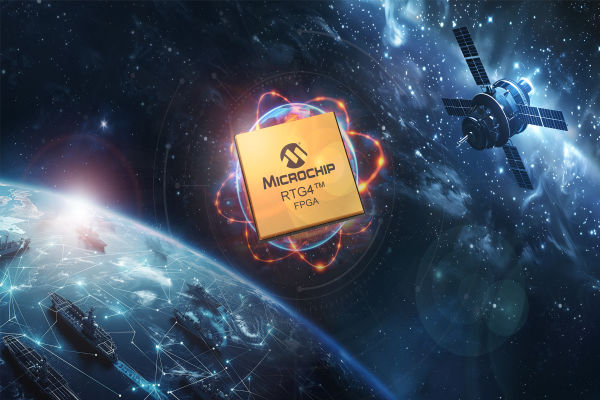Microchip Technology Radiation-Tolerant (RT) RTG4 Field-Programmable Gate Arrays (FPGAs) with lead-free flip-chip bumps have achieved Qualified Manufacturers List (QML) Class V accreditation, meeting mission assurance requirements for the most important space applications.
The Defense Logistics Agency (DLA) has designated QML Class V as the highest qualification level for space components. It is a prerequisite for meeting mission assurance requirements on the most important space missions, including deep space, human-rated, and national security programs.
Customers can employ QML-qualified items to expedite their design and certification processes since QML qualifications are defined based on particular performance and quality requirements governed by the DLA.
This next-generation solution with lead-free flip-chip bumps is the first of its kind to attain QML Class V accreditation. In 2018, RTG4 FPGAs became the first RT FPGAs with more than 150,000 logic elements to qualify for QML Class V.
Flip-chip bumps are used to join the silicon die and package substrate in sophisticated flip-chip package design, like that seen in the RTG4 FPGA. Bump material free of lead will contribute to the product’s increased lifespan, which is essential for space flights.
RTG4™ Field- Programmable Gate Arrays Are Designed:
- To bring high levels of density and performance to space applications.
- Save cost and engineering efforts through low power consumption and immunity to configuration upsets. Unlike SRAM-based FPGA alternatives, the programming technology used in RTG4 FPGAs provides low static power, which assists in managing thermal issues common in spacecraft.
- RTG4 FPGAs consume only a fraction of the total power compared to equivalent SRAM FPGAs, while exhibiting zero configuration upsets in radiation and thus requiring no mitigation, reducing engineering expenses and total system costs.
The RTG4 FPGA with lead-free bump has undergone rigorous reliability testing, with a maximum endurance of 2,000 thermal cycles from ?65°C to 150°C junction temperature, in order to obtain QML Class V qualification.
There were no indications of tin whiskers, and the lead-free flip-chip bump interface connections met MIL-PRF-38535 inspection requirements. Converting to lead-free bump RTG4 FPGAs has no effect on the user’s design, reflow profile, thermal management, or board assembly flow because the flip-chip bump is contained within the FPGA package.
QML Class Q RT PolarFire® FPGAs and sub-QML FPGAs, which fill the gap between conventional Qualified Manufacturers List (QML) components and Commercial Off-The-Shelf (COTS) components, are among Microchip’s radiation-hardened and RT solutions, which are among the most extensive in the industry.
For a comprehensive listing of Microchip FPGA and mixed-signal part numbers alongside their corresponding Defense Logistics Agency (DLA) drawing numbers, please refer to the DLA Cross Reference Guide.
Development Tools
The RTG4 FPGAs are supported by development kits, mechanical samples and daisy chain packages for board validation and testing. Libero® SoC Design Suite enables RTL entry through programming and includes a rich IP library, complete reference designs and development kits.
Availability
For additional information or to purchase, contact a Microchip sales representative, authorized worldwide distributor or visit Microchip’s Purchasing and Client Services website, www.microchipdirect.com.
Key Comments
“This is another milestone for our RTG4 FPGAs that will provide customers with added confidence in designing these devices in space flight systems, while allowing them to take advantage of our high-reliability, zero-configuration-upset and low-power consumption FPGAs,” said Bruce Weyer, corporate vice president for Microchip’s FPGA business unit. “For more than 60 years, Microchip solutions have powered space flight missions, and we are dedicated to product longevity and providing the highest quality solutions.”




